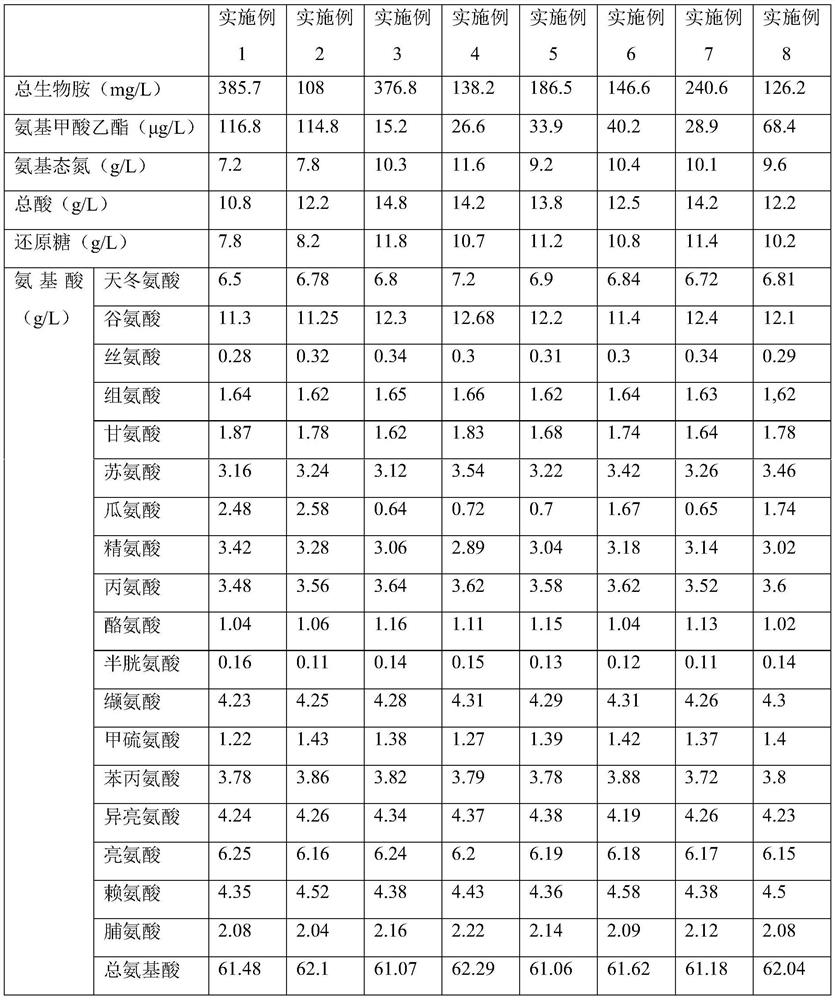A method for reducing the content of nitrogen metabolism hazards in soy sauce by compound bacteria
A technology of nitrogen metabolism and hazards, applied in the field of microorganisms, can solve problems such as extensive processing technology, food safety and biological health and safety risks
- Summary
- Abstract
- Description
- Claims
- Application Information
AI Technical Summary
Problems solved by technology
Method used
Image
Examples
Embodiment 1
[0046] (1) Preparation of starter culture strains
[0047] Inoculate Xylose Staphylococcus in MSA solid medium, incubate at 30-40 °C for 24-48 h to initially activate the species, pick up single colonies and inoculate into MSA liquid medium, incubate at 30-40 °C for 24-48 h, then, collect the bacteria, wash with 0.7-0.9% normal saline for backup. Salt-loving tetracocci were inoculated in MRS solid medium, cultured at a constant temperature of 30-40 °C for 24-48 h to initially activate the strains, single colonies were picked and inoculated into MRS liquid medium, cultured at a constant temperature of 30-40 °C for 24-48 h, and then, the bacteria were collected and washed with 0.7-0.9% normal saline for backup.
[0048] (2) Music making
[0049] Soybeans are selected and washed, soaked and drained, steamed for 15-30 minutes under high pressure and 110-125 °C conditions, taken out and cooled to room temperature; dried the flour, and the cooled soybeans were evenly mixed according to ...
Embodiment 2
[0053]In step (3), inoculate Xylose Staphylococcus xylose when mixed with brine with a concentration of 10 6 -10 8 CFU / L, the rest of the same as Example 1.
Embodiment 3
[0055] In step (3), inoculate Saltophila tetracoccus with a concentration of 10 when the koji is mixed with brine 6 -10 8 CFU / L, the rest of the same as Example 1.
PUM
 Login to View More
Login to View More Abstract
Description
Claims
Application Information
 Login to View More
Login to View More - R&D
- Intellectual Property
- Life Sciences
- Materials
- Tech Scout
- Unparalleled Data Quality
- Higher Quality Content
- 60% Fewer Hallucinations
Browse by: Latest US Patents, China's latest patents, Technical Efficacy Thesaurus, Application Domain, Technology Topic, Popular Technical Reports.
© 2025 PatSnap. All rights reserved.Legal|Privacy policy|Modern Slavery Act Transparency Statement|Sitemap|About US| Contact US: help@patsnap.com



